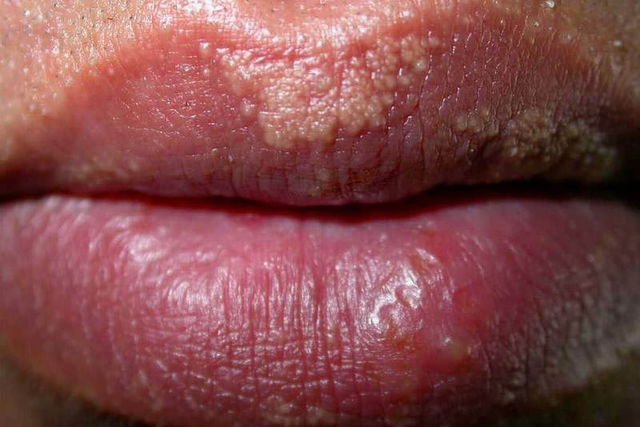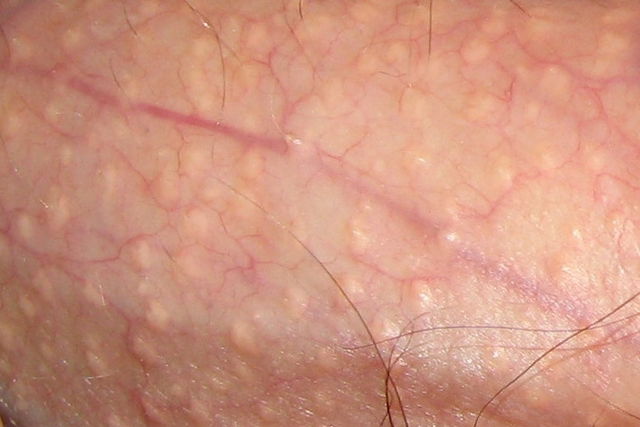Fordyce spots, also known as Fordyce granules, are small yellowish or whitish spots that may appear on the lips, on the inside of the cheeks or on the genitals. They emerge on their own and generally do not cause health problems.
These spots can appear due to enlarged sebaceous glands and may appear at any age (although they most frequently occur during puberty due to hormonal changes). They are not related to HIV, herpes, sexually transmitted infections, genital warts or cancer.
Although Fordyce spots do not require any specific treatment, there are ways you can remove them for aesthetic reasons, through the use of creams or even having laser surgery.

Common symptoms
The most common symptom of fordyce spots is one or more yellow, white or red bump measuring 1 to 3 mm in size. These can appear on various areas of the body, like on the edges of the lips, the inside of the cheeks or along the genital mucosa.
In the genital region, it is common for Fordyce spots to appear on the vaginal lips, in women, or on the body of the penis, glans, foreskin and/or scrotum, in men. They may look like small lumps or pimples.
Also recommended: Pimple on Penis: 12 Causes & How to Treat tuasaude.com/en/lump-or-pimple-on-penisFordyce spots normally do not cause symptoms like pain, itching or irritation. They can cause discomfort for cosmetic reasons, however.
Confirming a diagnosis
The diagnosis of Fordyce spots is normally confirmed by a dermatologist who will assess the bump and skin characteristics. Further testing is usually not necessary to confirm Fordyce spots.
However, Fordyce spots in the genital region can be confused with lesions caused by sexually transmitted infections in their early stages, such as HPV or herpes. Therefore, the doctor may opt to order testing for Fordyce spots in the genital area.
Also recommended: 10 Most Common STI's, Treatment, How to Treat & Is It Cure tuasaude.com/en/stiPossible causes
Fordyce spots are caused by the growth of sebaceous glands that have developed in unusual parts of the body, such as the skin around the edges of the lips and the mucosal lining of the genitals.
It is believed that Fordyce spots are present from birth and become larger and more visible during adolescence due to hormonal stimuli. Furthermore, they seem to be more common in men and in people with very oily skin.
Are Fordyce spots contagious?
Fordyce granules are not contagious or nor are they caused by viral or bacterial infections. They emerge on their own in the region of the mouth or genitals.

Treatment options
The treatment of Fordyce spots is usually only done for aesthetic reasons. It is not always possible to completely eliminate the lesions, however. Some of the more common ways to remove the spots include:
- Use of ointments and creams that contain tretinoin or dichloroacetic acid. These medications can visibly reduce skin changes, but should only be used if prescribed by a dermatologist;
- Micro-punch technique: Local anesthesia is applied to to the affected area and then the doctor uses a pen-like device to excise the lesions from the skin;
- CO2 Laser: The doctor uses a strong ray of light to remove the lesions. This technique can leave scars and therefore should only be performed by a dermatologist.
These treatment techniques can be used to remove or disguise Fordyce spots from all parts of the body, even in the genital region.
Natural remedies like jojoba oil, vitamin E or argan extract have been successfully used in the treatment of Fordyce spots in combination with medication.
It is important to avoid squeezing or picking at the Fordyce spots at home to remove them, as this technique will not permanently eliminate them and may put you at risk for developing a skin infection.
